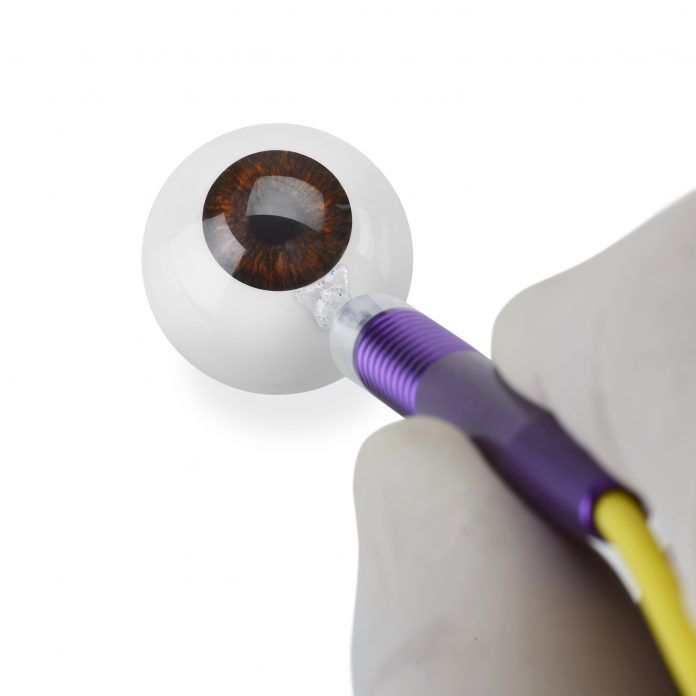What To Know
- The authors concluded that MicroPulse TLT is easily performed, can be repeated with good results, is an efficient and safe strategy to reduce IOP, and can be used in a wide spectrum of glaucoma disease.
- “Inclusion in the EGS guidelines plus nine papers presented in the Society's meeting shows the growing adoption of this effective non-incisional therapy for the management of glaucoma disease.
December 23, 2020
MicroPulse Transscleral Laser Therapy which is performed using the IRIDEX Cyclo G6® Laser System and MicroPulse P3® Delivery Device, has been included in the European Glaucoma Society (EGS) Terminology and Guidelines for Glaucoma.
The EGS guidelines represent recommendations on the diagnosis and management of glaucoma to standardize practice within the European Union. The new guidelines, the Society’s 5th edition, were presented at the Annual EGS Meeting on December 12-13, 2020.
“We are very encouraged with the broadening recognition of MicroPulse Transscleral Laser Therapy in the ophthalmic community,” said David Bruce, CEO, IRIDEX. “Inclusion in the EGS guidelines plus nine papers presented in the Society’s meeting shows the growing adoption of this effective non-incisional therapy for the management of glaucoma disease.”
MicroPulse Transscleral Laser Therapy is a non-incisional procedure that substantially reduces intraocular pressure (IOP) for a broad range of glaucoma types and severity. The procedure can be used for primary open-angle, closed-angle, and refractory glaucoma. It’s a repeatable treatment option that can be performed before, during, or after other glaucoma interventions. More than 140,000 patients have been treated with MicroPulse Transscleral Laser Therapy in top ophthalmic hospitals around the globe.
Also presented at the EGS meeting, were nine MicroPulse Transscleral Laser Therapy studies. These studies were conducted in several countries which exemplify the continued global expansion of MicroPulse TLT. Featured studies included:
- P248: MicroPulse Transscleral Cyclophotocoagulation: Step by Step; Rita Basto, et al. (Poland)
This study represents a 6-month retrospective review of glaucoma patients (38 eyes) treated with MicroPulse TLT. The percentage of IOP reduction was 43.4 ± 16.2% (8.9% – 70.6%). A success rate (defined as >20% IOP reduction and IOP ≤ 21 mmHg) was obtained in 81.6% of cases with no records of serious complications. The authors concluded that MicroPulse TLT is easily performed, can be repeated with good results, is an efficient and safe strategy to reduce IOP, and can be used in a wide spectrum of glaucoma disease.
- P350: Use of MicroPulse Transscleral Cyclophotocoagulation in Glaucoma Associated with Penetrating Keratoplasty or KPRO; Consuelo Gajardo Menzel, et al. (Peru)
The authors presented 1-year follow-up of MicroPulse TLT in glaucomatous patients with corneal grafts. Patients’ IOP was reduced by an average of 50%, and the authors concluded that MicroPulse TLT in patients with corneal transplants is effective and safe. - P359: Microimpulse Cyclophotocoagulation in Combined Neovascular Glaucoma Treatment; Nazir Khodzhaev, et al. (Russia)
This study evaluated a combined treatment of anti-vascular endothelial growth factors (VEGF) injections and MicroPulse TLT in 15 patients (15 eyes) with secondary neovascular glaucoma (NVG). Initial outcomes demonstrated an IOP reduction of approximately 26%, with a reduction in drops from 3.5 to 2.7, concluding that anti-VEGF and MicroPulse TLT are a safe and effective treatment in NVG patients. - 430: Topical Anesthesia for Diode Transscleral MicroPulse Cyclophototherapy; Maria Cecilia Aquino, et al. (Singapore)
This study evaluated the use of topical anesthesia and oral paracetamol in a prospective case series of 22 patients receiving MicroPulse TLT. Although a majority of patients experienced moderate pain during treatment, all patients tolerated the entire treatment lasting for 100 seconds without additional peribulbar anesthesia. The post-operative pain in the immediate 24-hours after treatment was unremarkable requiring no oral analgesic medications. -
Other studies presented:
- P043: MicroPulse Transscleral Laser in Children – The Auckland and Singapore Experience; Marcus Tan, et al. (New Zealand)
- P211: Short-term Efficacy and Safety of MicroPulse Transscleral Cyclophotocoagulation in Asian Glaucoma Patients; Mi Sun Sung, et al. (South Korea)
- P226: Mid-Term Results of Micro-Pulse Transscleral Cyclophotocoagulation with Diode Laser on Treatment of Glaucoma: A Retrospective Analysis; Guido Barosco et al. (Italy)
- P245: Outcomes of MicroPulse transscleral cyclophotocoagulation in Patients with Glaucoma – A Case Series; Wojciech Maruszczyk, et al. (Poland)
- P485: A Modified MicroPulse Transscleral Cyclophototherapy technique for the Treatment of Refractory Glaucoma; Victor Teck Koh, et al. (Singapore)
